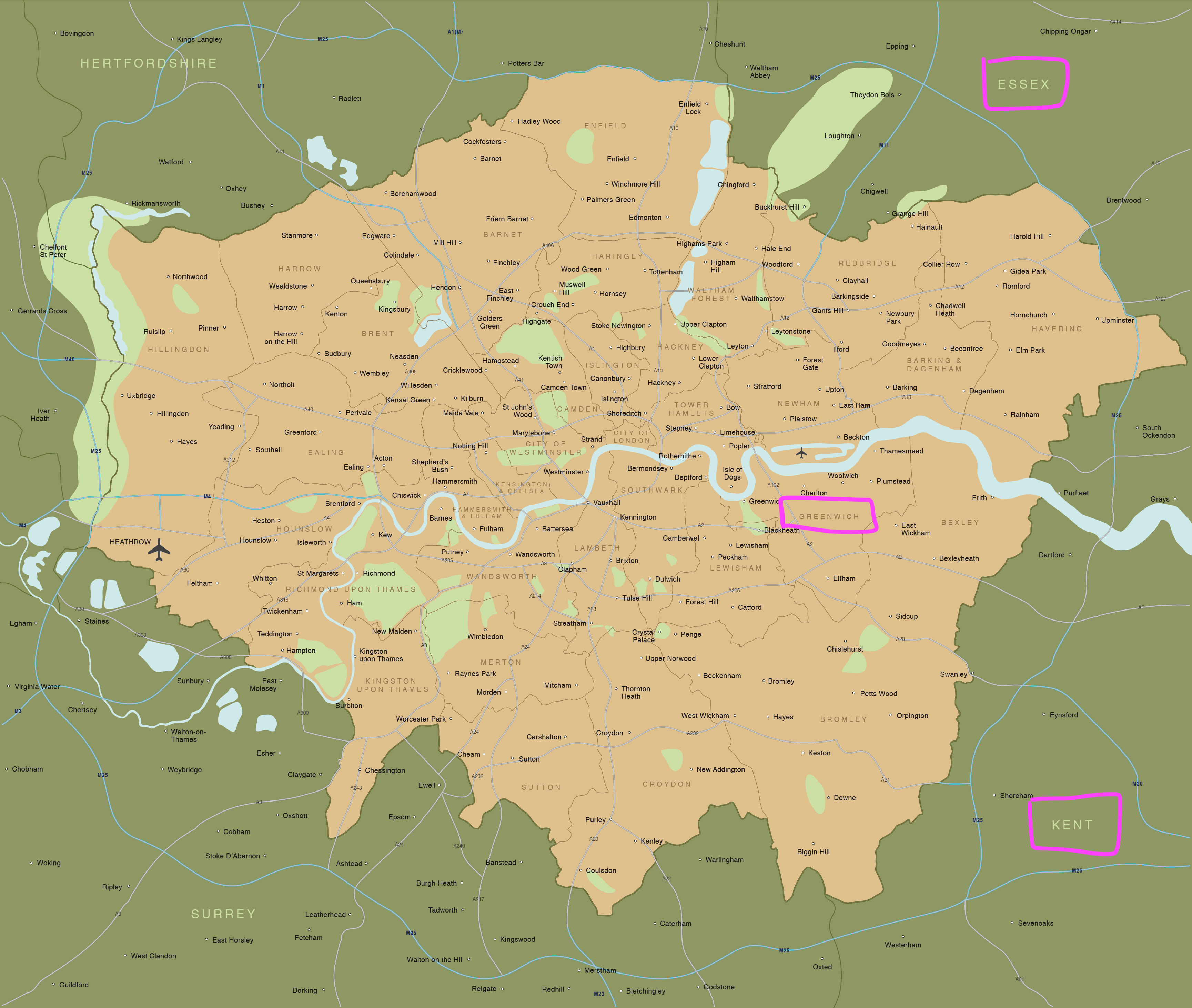Like the first sentence, it's a short, punchy, and fragmentary.
Like the second sentence, it imagines an axis and then shows us two contrasting poles.
In this instance, the axis is north-south, and the contrasting poles are the marshes in the north and the heights in the south.
"How do you know it's north-south?"
By looking up Essex and Kent on a map! (And in the middle there's Greenwich, which will come up in the next snippet.)

If you lived in London, this axis would be obvious—but even if you don't, you still get the sense of 'from one end to the other' in the description.
So, for your variation imagine an axis, even if it might not be obvious to your reader what it is.

